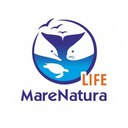Biodiversity
 |
Interreg V-A Italia-Malta Capitalization of awareness campaigns for an Italian – Maltese harmonization for a good state of environment |
 |
The LIFE CONCEPTU Maris project, formulated more than a year ago, started on 10 January, based on the awareness that the Mediterranean Sea is undergoing serious changes due to growing anthropogenic pressures. On this front, cetaceans and pelagic sea turtles, among the most charismatic and important species of our seas, risk a lot in terms of conservation |
 |
DigitAP - Digitization of national parks and marine protected areas Monitoring of pressures and threats on species and habitats and climate change |
 |
Ecological Network and Terrritorial planning In the scientific literature, the ecological network (EN) has different meanings depending on the aspects to prioritize. Therefore the EN can be put into practice with different methods of implementation. |
 |
Electrocution of birds is a global concern recognized as a priority issue to be addressed in the context of species conservation. Birds of prey are particularly susceptible to electrocution because of their size and habit of using power line supports as perches, for resting and hunting |
 |
ISPRA participates in the project promoted by MedWet, aimed at creating an inventory of wetlands and the definition of a strategy for their protection in the Mediterranean level |
 |
The breeding range of the lesser kestrel (Falco naumanni) in the central-eastern Mediterranean area is shifting northwards due to climate change. LIFE FALKON is fostering resilience by improving the conservation status of the population at the north-eastern edge of its breeding range in Italy and Greece. The project will provide increased nesting opportunities, including nest boxes and towers, promote favourable rural development and building renovation practices, and establish a network of conservationists focused on populations crucial for the species’ northward breeding expansion |
 |
The LIFE MareNatura project aims to mitigate threats affecting nine EU priority species: the Mediterranean monk seal, loggerhead turtle, green turtle, sperm whale, porpoise, Cuvier's beaked whale, common dolphin, shearwater minor and the Corsican gull. |
 |
National project on the biology and conservation of skunks and weasels in Italy MustelaWatch.it is the Italian portal dedicated to skunks and weasels designed and created by the Italian Mesocarnivore Research Group (GrIMeC) of the Italian Theriological Association (ATIt). It contains news on the species, insights, publications, as well as distribution maps updated in real time, with recent data and new acquisitions. |
 |
Natural Intelligence for Robotic Monitoring of Habitats (NI) The aim of the project is to cover new areas of application for robots using technologies to guide their movement in the field and installing specific sensors for the detection of data useful for monitoring natural habitats. As part of the NI ISPRA Project, it will collaborate in defining the case studies and calibrating the functional requirements of the robots (sensors). Furthermore, ISPRA will follow the evolution of the functions related to environmental monitoring, evaluating which technologies will have reached a satisfactory degree of maturity for their inclusion in the guidelines for the monitoring of habitats of community interest, the first version of which was published in 2016 (ISPRA MLG 142/2016 series). |
|
The LIFE Perdix Project aims at the recovery and conservation of Italian Partridge (Perdix perdix italica), declared extinct in the wild. The main actions of the project are: genetic analysis, captive breeding and the reintroduction of viable populations within the Natura 2000 site of Valli del Mezzano, Special Protection Area (SPA IT4060008) in the Po Delta. |
|
 |
The LIFE project entitled SEAFOREST LIFE "Posidonia meadows as carbon sinks of the Mediterranean" has been approved and funded under the LIFE Program, sub-program 'Actions for the 2017 Climate', a priority area with issues in the mitigation of climate change. |

|
LIFE STREAMS project "Salmo ceTtii REcovery Actions in Mediterranean Stream The general purpose of the LIFE STREAMS Project is the adoption of concrete conservation actions for the Mediterranean trout (Salmo cettii |
 |
The European wildcat (Felis silvestris) is an endangered species legally protected in Europe under the Convention of Washington (CITES; Appendix II), the Directive 92/43 / EEC HABITAT (Annex IV), the Bern Convention (Appendix), and is listed as “least concern” in the IUCN red list.
|
 |
WOLFNESS aims to improve the conservation status of the wolf (Canis lupus) in Europe consequently to its re-expansion, not only in natural contexts but also in anthropized areas, where the risk of anthropogenic hybridization between wolves and domestic dogs (WDH) could be high. The project will aim also to shed light on the dynamics of anthropogenic hybridization, to standardize investigation methodologies and improve the management and social acceptance of the phenomenon. |
